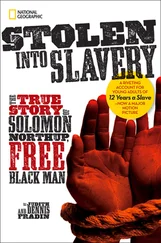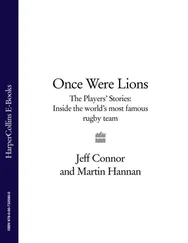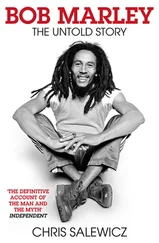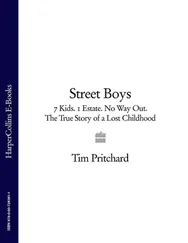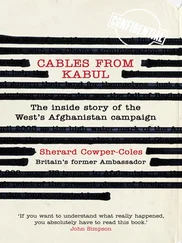By 1983 I was working virtually full-time as a graphic designer. I wasn’t earning enough to make a living, but I was earning more than enough to get done for social security fraud. I wanted to go legitimate but couldn’t see how I was going to do it. Then a customer of mine, Walter, mentioned the Enterprise Allowance Scheme. Apparently the Government paid budding entrepreneurs £40 a week, for a year, to get them off the dole and into business. Walter managed a band called The Hostages and was trying to get them signed up to the scheme as well. I looked into it and discovered that I wouldn’t qualify for two reasons. Firstly, your business had to be brand new, not an existing enterprise. Secondly, your business couldn’t involve anything immoral or controversial. But what the fuck. I decided to apply anyway.
At the interview I told them I was starting up a brand new graphic design business. They didn’t seem in the least bit interested. In fact they didn’t even ask to see the documents they’d told me to bring along, one of which was a bank statement proving that I had £1000 capital to start my business with. This was the money that had gradually been accumulating from comic sales over the years, which came to around £960, topped up with a few quid from my Post Office Savings Account. I was in and out the door in a matter of seconds. They simply rubber-stamped my application, wished me good luck and called in the next budding entrepreneur. The Enterprise Allowance Scheme was often ridiculed for being a political scam to cut the dole figures, and I suppose it was. But it did actually work, albeit on the ‘throw enough shit at a wall’ principle. Fortunately I was one of the shits that stuck.
So I finally signed off the dole and became self-employed in November 1983. Two months earlier I’d written to another BBC yoof programme in response to an ad I’d seen on TV. The producers of a show called Sparks said they wanted to hear from any ‘bright young sparks’ who were involved in setting up their own small enterprises. Viz seemed like an ideal candidate for the show and a couple of weeks later a producer called Tony Matthews came up to Newcastle and met myself, Jim and Simon. He liked what he saw and the following week he wrote offering us a slot on the show. Tony said he was keen to bring some of the characters to life on TV, either by animation or using actors. He was also keen for us to have a big input into the programme. We weren’t supposed to be making the programme this time, but what Tony did was effectively give us a free hand to make our own TV commercial. Under the directorship of a girl called Alex Laird, who I think had a slightly bent nose, our little film was shot on location in Newcastle in late 1983. Jim, Simon and I were filmed drawing cartoons, talking about the characters and working at the Free Press. Simon’s acting talents came to the fore as he posed as Charlie Pontoon, our right-wing newspaper columnist, and the BBC even allowed us to hire a proper actor to play Roger Mellie. We picked a bloke called Charles Pemberton out of an actors’ sample book and the BBC Costume Department knocked up a black-and-white stripy jacket for him to wear. Sparks was a BBC Education programme, so our film had to be educational in some way, so I wrote a set of accompanying notes giving advice to any viewers who wanted to set up their own magazine.
Sparks was broadcast on 3 April 1984 at 7.05 p.m. on BBC2, and our little piece came across very well. Great credit must go to Tony Matthews and Alex Laird for capturing the spirit of the comic so well on the TV screen. Not everyone approved of the programme though. The following written complaint was received by the BBC the day after Sparks was broadcast.
Tonbridge,
Kent
3rd April 1984
Sirs
BBC2 programme at 7.05pm today ( Sparks ) I switched on to BBC2 just after 7 p.m. this evening to be greeted with absolute filth. What made me livid was that I could well have had my two grandchildren with me and they could easily have been tuned-in to that farrago of gutter language, etc. That apart, I myself have no wish whatsoever to see or hear such muck, and for the life of me cannot understand what sort of people now run the BBC. I noted who directed and produced this programme and that three females were also concerned with it as Production Assistants or similar. What delightful people they must all be . . .
Neither I, nor my wife, nor many of our friends, have any wish to see the sort of filth that Sparks was full of, and it’s high time your organization cleansed itself of them. No wonder our times are what they are; you bear a heavy burden of guilt, but I suppose it doesn’t really bother you.
R. H. Underwood
The programme made a more positive impression elsewhere, and while the BBC were fielding complaints I was taking a call from Bob Paynter of IPC Magazines. IPC were Britain’s biggest and best-known magazine publisher. Paynter said he’d watched the Sparks programme the night before and was intrigued. He wondered if he might see some samples of our magazine. I posted off copies of issues 9 and 10 and was on tenterhooks for the next few days wondering what his reactions would be. Eventually he rang back. How did the three of us fancy coming down to London to have lunch with his board of directors?
Paynter sent me a cheque for £276. At first I thought he wanted me to buy a car and drive down, but when I rang him he explained that this money was to cover the cost of three first-class rail fares. ‘There’s plenty more where that came from,’ he said in all seriousness. When the cheque arrived I sat and admired it for some time, then I used it to buy three saver return tickets. We pocketed the change, which came to about £60 each – the first money any of us had ever made out of Viz. We went down to London on 26 April 1984. At the time the Sun was serializing the kiss-and-tell memoirs of snooker player Tony ‘the Lancashire hot-pot’ Knowles. Jim, Simon and I rarely wrote anything together but I vividly recall writing a spoof of that on the train journey down. When we got to London we caught a tube to somewhere near the river and then walked the rest of the way, across a bridge, with me plotting our route on an A to Z. You couldn’t miss King’s Reach Tower. It was, and hopefully still is, a massive building dominating the south side of the Thames. This was the prestigious headquarters of the International Publishing Corporation. We announced our arrival at reception and a few moments later Bob Paynter came down to greet us. His overall attire – his smart green blazer in particular – made him look as if he’d just broken off from an important lawn bowls match to meet us. Paynter was in his fifties, with a greying, bouffant hairdo, and he bore an uncanny resemblance to Danny La Rue. He ushered us into a lift and told us we were going up to the Penthouse Suite to meet ‘the board’.
When the doors opened we stepped cautiously out into a vast dining suite where a host of men in suits were mingling and sipping drinks. It was like walking into a dinner party. We all looked a right state in our jeans, trainers and T-shirts. A particularly well-dressed man came towards me smiling and I went to shake his hand. He was the waiter. I ordered a glass of orange. Then I was introduced to our host, John Sanders, the Managing Director of IPC’s Youth Group. Sanders was a funny-looking bloke, a cross between Walter Matthau and Wilfrid Brambell, with what appeared to be a very expensive old lady’s wig and a facial expression that made him look like he was permanently tasting soy sauce for the very first time.
The view from the top of King’s Reach Tower was pretty impressive, due largely to the height of the building and the size of the windows. Sanders took me to one side and pointed out a selection of tiny little buildings below – London Weekend Television, the National Theatre, Waterloo Station and, finally, the headquarters of the International Monetary Fund. ‘Do you know much about the IMF?’ he asked with the enthusiasm of a man who clearly did and wanted desperately to tell someone about it. A few moments later I was saved from our one-way conversation about international monetary policy by a call to the dinner table. The table itself must have been at least six feet wide and three times as long. On one side, with our backs to the window, sat the three of us. Lined up all the way along the other side were ‘the board’, about eight of them in all. At this point Sanders, who sat in the centre facing me, formally introduced his colleagues. I can’t remember any of their names but for each one he gave a boastful, and to me entirely baffling, summary of their CV, punctuated by poignant pauses during which he smiled and we were clearly supposed to look impressed.
Читать дальше




